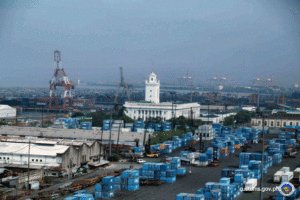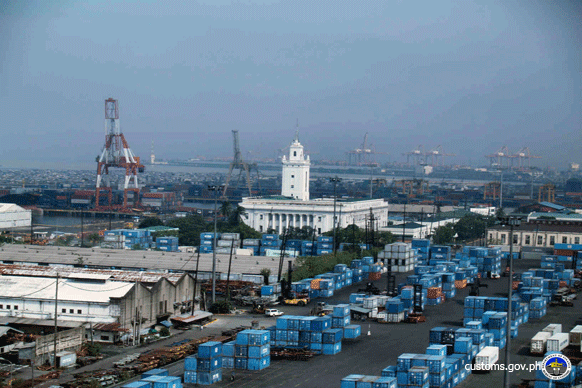 Cargo volume handled by Philippine ports grew 1.76% in January 2017, driven by increases in both foreign and domestic cargoes.
Cargo volume handled by Philippine ports grew 1.76% in January 2017, driven by increases in both foreign and domestic cargoes.
Cargo volume for the month reached 17.476 million metric tons (mmt), slightly higher than the 17.175 million mmt handled in the same month in 2016, according to the Philippine Ports Authority (PPA).
PPA reported that “the sustained strong domestic demand and private consumption during the previous year continued to sustain the volume of port traffic and transactions in shipping and trade.”
Foreign cargoes improved 2.51% to 10.086 mmt in January 2017 from 9.839 mmt in January 2016. Of the total, imports rose 10.9% to 7.397 mmt from 6.670 mmt, while exports declined 15.15% to 2.689 mmt from 3.169 mmt in 2016.
Weakened export traffic was observed at the Port Management Offices (PMO) of Bataan/Aurora, North Luzon, Agusan, and Davao.
Domestic cargoes, meanwhile, went up slightly by 0.75% to 7.391 mmt from 7.336 mmt.
Box volume up 4.7%
Container traffic likewise grew, rising 4.77% to 504,113 twenty-foot equivalent units from 481,165 TEUs in January 2016. Foreign containerized traffic went up 3.74% to 313,445 TEUs from 302,159 TEUs, while domestic containers handled rose 6.52% to 190,669 TEUs from 179,006 TEUs.
Gaining the highest overall increase in container volume was PMO National Capital Region (NCR) South, which includes Manila International Container Terminal, followed by NCR North and Western Leyte/Biliran.
Shipping traffic fell 4.36%, with domestic vessels recording most of the decrease. Domestic ship calls dropped 4.83% to 32,743 in January from 34,403 in the same period of 2016. PPA said the decline was a result of the successive cancellation of trips due to strong southwest monsoon winds, strong undercurrent water conditions, and gale warnings.
Foreign ship calls, on the other hand, increased 14.35% to 980 from 857.
Passenger traffic, meanwhile, maintained its upward momentum, posting 6.5% higher traffic in January 2017 to 6.109 million from 5.735 million a year ago.
The ports authority said the positive performance was a result of the continuous reliance of the sea-travelling public on roll-on/roll-off (ro-ro) vessels, fast craft, and motorized bancas as primary modes of transportation for inter-island connectivity.
“The surge in passenger traffic was likewise a result of the government’s eco-tourism programs encouraging leisure inter-island RoRo travel to tourist destinations such as Siargao, Puerto Galera, Bohol, Coron, El Nido and other emerging tourism sites,” PPA explained.
No port congestion
Meanwhile, PPA said “the effectiveness of anti-port congestion measures and container movement at Manila ports are continuously being monitored by the Authority to ensure that efficient port operation is maintained and the ports remain free from congestion.”
The Manila port is the country’s main sea gateway and handles the biggest volume.
According to PPA figures for January 2017, NCR North had a berth occupancy rate and a yard utilization rate of 73.64% and 40%, respectively; NCR South 62% and 76.70%; and MICT 65% and 64.17%.
In quay crane productivity, NCR North recorded 21.13 moves per hour, NCR South 25.3 moves per hour, and MICT 24.9 moves per hour.
PPA said these data showed that there was no congestion at Manila ports in January.
“For ports other than those based in Manila, PPA is studying key performance indicators that can be adopted for benchmarking the performance of vessel and cargo operations according to the type of traffic to which they cater,” the ports authority said.
Earlier, PPA said it had revised its growth targets downward and now anticipates nominal improvement this year from the previous year’s exponential growth, citing the continuing volatility of the Philippine currency and the expected drop in mining operations in the Philippines.
“Based on our review, almost all our business aspects have already reduced targets and budgets for 2017, ranging from the original 20% to only 3%,” PPA general manager Atty. Jay Daniel Santiago said.





